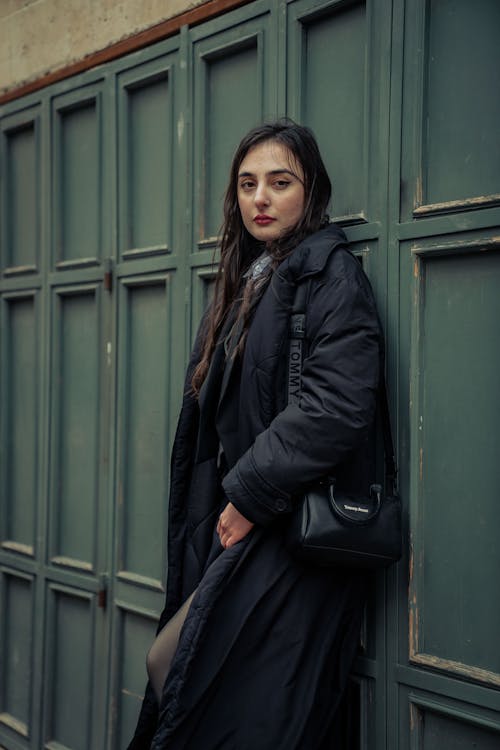Your cart is currently empty!


Women’s Fashion Models has undergone a significant transformation over the past two decades. The year 2000 marked the beginning of a new era in fashion, where supermodels became global icons and set the stage for the diverse and dynamic industry we know today. From the runway to social media, fashion models have played a pivotal role in shaping trends, influencing beauty standards, and driving the business of fashion forward.
The Rise of the Supermodel
The early 2000s saw the continuation of the supermodel phenomenon, which began in the late 1980s and 1990s. Icons like Naomi Campbell, Cindy Crawford, and Claudia Schiffer were still very much in demand, but the industry was also beginning to embrace new faces. The term “supermodel” became synonymous with not just beauty, but also with power and influence. These models were not just walking mannequins; they were brands in their own right, commanding high fees and setting trends.
The Influence of the Internet The Best Women’s Fashion Models Review 2024
As the internet became more accessible, the fashion industry began to change. The rise of fashion blogs and online magazines provided new platforms for models to showcase their work. Websites dedicated to fashion and beauty started featuring models alongside celebrities, and the lines between the two began to blur. This shift allowed models to reach a global audience and build their own followings, independent of traditional fashion media.
Social Media: A Game Changer
Social media, particularly Instagram, revolutionized the modeling industry. Models no longer had to rely solely on agencies and runway shows to gain recognition. With a single post, they could connect with millions of followers, brands, and designers. This direct line of communication allowed models to cultivate their personal brands and influence fashion trends in real-time. Instagram became a portfolio, a marketing tool, and a business platform all in one.
Diversity and Representation

One of the most significant changes in the modeling industry over the past two decades has been the push for diversity and representation. The early 2000s were criticized for a lack of diversity, with most models fitting a narrow standard of beauty. However, the industry has made strides in recent years to be more inclusive, featuring models of different ethnicities, body types, and ages.
The Impact of Diversity on Fashion
This shift towards diversity has had a profound impact on the fashion industry. Brands are now more aware of the need to represent a broader range of consumers. This inclusivity is not just a trend but a necessary evolution that reflects the changing demographics and values of society. Models like Ashley Graham, Winnie Harlow, and Adut Akech have become symbols of this change, proving that beauty comes in many forms.
The Role of Fashion Models in the Digital Age
The digital age has redefined what it means to be a fashion model. Today, models are not just faces; they are influencers, entrepreneurs, and activists. They use their platforms to speak out on social issues, collaborate with brands, and even launch their own businesses. The role of the model has expanded beyond the runway and photo shoots, encompassing a wide range of activities that were previously outside the traditional scope of modeling.
Models as Influencers

The rise of the influencer model is one of the most notable developments of the digital age. These models use social media to build personal brands, often collaborating with fashion and beauty brands for sponsored posts. The power of the influencer model lies in their ability to connect with their audience on a personal level, making them more relatable than traditional models.
Entrepreneurial Ventures
Many models have taken advantage of their platforms to launch their own businesses. From beauty lines to fashion labels, models are using their influence to create and promote their own products. This entrepreneurial spirit has further blurred the lines between modeling and other industries, allowing models to take control of their careers in ways that were previously unimaginable.
The Future of Fashion Modeling
As we move further into the 21st century, the fashion modeling industry will continue to evolve. The push for diversity, the influence of social media, and the entrepreneurial spirit of models will shape the future of the industry. Fashion models will continue to be at the forefront of cultural and social change, using their platforms to advocate for causes and influence the direction of fashion.
The Impact of Technology
Advancements in technology, such as virtual and augmented reality, are already beginning to impact the fashion industry. Virtual models and digital fashion shows are becoming more common, challenging traditional notions of what it means to be a model. As technology continues to advance, the role of the fashion model will likely continue to change, with new opportunities and challenges emerging.
Sustainability and Ethical Fashion
Sustainability and ethical fashion are also likely to play a significant role in the future of modeling. As consumers become more conscious of the environmental and social impact of their purchases, models who align themselves with sustainable and ethical brands may find new opportunities. This shift towards sustainability will likely influence the types of campaigns and collaborations that models participate in, further expanding the scope of their work

Assalamu Alaikum.. I am Mohammad Sojib I have been working in fashion for a long time I am in US and UK and I write about this topic in many places. I have been working and working on this topic for a long time
And I am a blogger I have been blogging about fashion for a long time in different places.








Leave a Reply